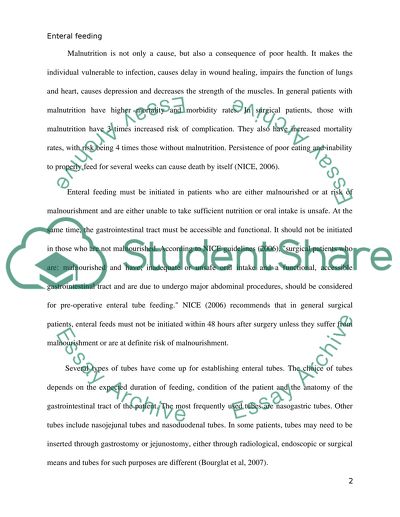Enteral Nutrition Diet Essay Example | Topics and Well Written Essays - 750 words. Retrieved from https://studentshare.org/nursing/1478042-enteral-nutrition-diet
Enteral Nutrition Diet Essay Example | Topics and Well Written Essays - 750 Words. https://studentshare.org/nursing/1478042-enteral-nutrition-diet.


